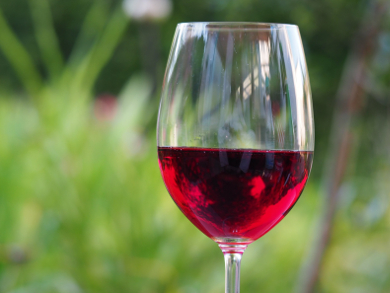The color, taste, and beneficial health properties of wine (especially red wine) can be attributed to polyphenols, including tannins and red anthocyanin pigments. Although a number of reaction products in red wine – the emerged part of the “wine polyphenol iceberg” – have already been identified, the hidden part results from random complex cascades of reactions that are poorly understood.
Anna Vallverdú-Queralt, Institution INRA (French National Institute for Agricultural Research), Montpellier, France, and colleagues have used a strategy based on high-resolution mass spectrometry (HR-MS) and Kendrick mass defect plots to study the immersed part of the wine polyphenol iceberg. In a proof-of-concept experiment, acetaldehyde, epicatechin, and malvidin-3-O-glucoside were used to represent yeast metabolites, tannins, and anthocyanins, respectively. A total of 160 mass signals were unambiguously identified and attributed to a series of compounds, including both expected and previously unknown structures.
By using this simple wine-like model, it can be seen that random cascade reactions generate high complexity. The researchers have demonstrated that random polymerization occurs, involving both the original substrates and intermediate products of the cascade reactions. Therefore, the exact composition of wine is likely a result of step-growth condensation and polymerization reactions.
- The Hidden Face of Wine Polyphenol Polymerization Highlighted by High-Resolution Mass Spectrometry,
Anna Vallverdú-Queralt, Emmanuelle Meudec, Matthias Eder, Rosa M. Lamuela-Raventos, Nicolas Sommerer, Véronique Cheynier,
ChemistryOpen 2017.
DOI: 10.1002/open.201700044
Also of Interest
- Polyphenols: Contributors to Good Health – Part 1,
Nikolai Kuhnert,
ChemViews Mag. 2017.
DOI: 10.1002/chemv.201700022
What are polyphenols and why do plants make them?



